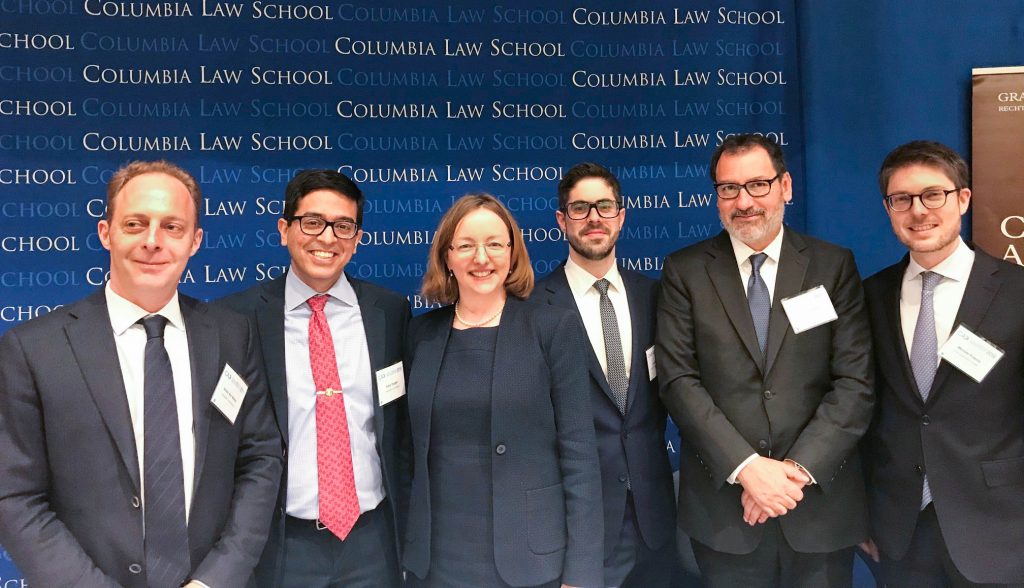by Liat Tapia LL.M. ’18

Columbia Arbitration Day (CAD) has been one of the most memorable experiences that I have had since I started the LLM Program at Columbia. It is known that this event allows the participants to learn from recognized figures in the international arbitration field and deepen their knowledge of some “hot topics” in this area of law. In this post I would like to point out a different aspect of CAD that caught my attention: how this event embodies some of the most fundamental principles of our law school — excellence, community, democracy, and hard work.
The conference titled “The Way Forward: International Arbitration Meets a New Global Reality” was oriented to cover a range of topics related to different areas of international arbitration practice, such as the unresolved issues of the New York Convention; thoughts about the Reform to ISDS; the interaction between Interstate Arbitration, International Courts, and Investment Arbitration; Ethical and Regulatory Issues of Third Party Funding; and an interesting speech by the keynote speaker, Paul Friedland, about The Global Economy and the Business of International Arbitration.

The variety of topics discussed gave attending practitioners the chance to advance their understanding of their area of practice and to become aware of the main issues discussed in other distinct but related areas within international arbitration. For law students, panels introduced us to all the various practice areas of international arbitration. The Columbia International Arbitration Association (CIAA) specifically selected each of the speakers for his or her commitment and specialization in the topic discussed, and the panels were designed to allow the presentation of different views regarding the issues. I have attended to many congresses both as a student and as a practitioner, and I am impressed by the excellence of CAD.
One of the features of the congress that also attracted my attention was the number of practitioners involved. In fact, for first time since the creation of CAD, the number of practitioners (around 100) exceeded the number of students enrolled. The presence of lawyers indicated the practical relevance of the topics discussed during the day, and allowed an interesting interaction between students and academics, on one hand, and the “real world of arbitration”, on the other. CAD gave to the attendants an invaluable opportunity to connect with people interested in arbitration from the academic and professional worlds. With 182 attendees total, participation in the congress went beyond all goals.

CAD was also an opportunity to contribute as a student to overcome a repetitive objection to the arbitration practice. One common critique made about the “International Arbitration world” is that it is represented by a closed circle of people that lacks diversity of faces and opinions about the practice. CAD presented a program that opened spaces for a new generation that, without sacrificing high-level analysis and thorough understanding of the previous lecturers, presented a fresh view and a different approach towards the field. Among those faces were several women, which is especially important for practitioners who sometimes miss female references in this arena.

Finally, CAD gave the members of CIAA, JDs, and LLMs the chance to get to know each other, work together, and put on the table our different capabilities, styles, and backgrounds. This experience resulted in a congress that the attendants highly appreciated and that I will keep in my mind as one of the most important experiences of my year at Columbia.
Liat is an LL.M. student from Chile who has been dedicated to arbitration practice and teaching Civil Law at a Chilean University.